ADULT SIBLING RELATIONSHIPS
Adult Sibling Relationships
Geoffrey L. Greif and Michael E. Woolley

COLUMBIA UNIVERSITY PRESS NEW YORK
COLUMBIA UNIVERSITY PRESS
Publishers Since 1893
New York Chichester, West Sussex
cup.columbia.edu
Copyright 2016 Columbia University Press
All rights reserved
E-ISBN 978-0-231-54080-3
Library of Congress Cataloging-in-Publication Data
Greif, Geoffrey L.
Adult sibling relationships / Geoffrey L. Greif and Michael E. Woolley.
pages cm
Includes bibliographical references and index.
ISBN 978-0-231-16516-7 (cloth : alk. paper) ISBN 978-0-231-16517-4 (pbk.) ISBN 978-0-231-54080-3 (electronic)
1. Brothers and sisters. 2. Sibling rivalry. 3. Developmental psychology. 4. AdulthoodPsychological aspects. 5. Brothers and sistersDeath. I. Woolley, Michael E. II. Title.
BF723.S43G74 2016
155.6'46dc23
2015009584
A Columbia University Press E-book.
CUP would be pleased to hear about your reading experience with this e-book at .
Cover design: Catherine Casalino
References to websites (URLs) were accurate at the time of writing. Neither the author nor Columbia University Press is responsible for URLs that may have expired or changed since the manuscript was prepared.
CONTENTS
Barbara Kane and Linda Hill
Anne P. Hahn


BETWEEN US, GEOFFREY GREIF AND MICHAEL WOOLLEY, we have seven siblings, which include full, step-, and half brothers and sisters. One of us (Geoff) is the youngest of three, and the other (Mike) is the second oldest of six. Our own sibling relationships range from the very close (Geoff), to quite distant (Mike has both). We have marveled at the sometimes very large differences in our sibling relationship experiences and how that reflects the range of experiences of the people we interviewed for this book. We grew up with two parents who were married once, to each other (Geoff), and with a constellation of parents who, counting just the two progenitor parents, were married seven times (Mike). We observed our parents and stepparents who had varying degrees of closeness to their own siblings, our aunts and uncles, whom we have come to see affect our own relationships with our siblings. Between us, we have experienced both parental support of and parental interference in our sibling relationships. Some of our parents have shown favoritism (Mike). Both of us have buried parents (Geoff one and Mike three, two biological and one step) and have participated in (Geoff) or acted as the sole executor of (Mike) their estates. The divisions of those estates ranged from the amicable (Geoff) to the complicated and conflictual (Mike). Our wives also have complicated relationships with their siblings and have sibling-like relationships with first cousins. One of us has both a sibling and a sibling-in-law with a disability (Mike). One of us (Geoff) has two children, and the other (Mike) has one child. Geoff keenly watches his adult childrens relationships with one another develop, and we both observe how all three of our children interact with our siblings children, their first cousins, and our sibling-like cousins children (Mike). Each of these three generations (and an emerging fourth; Geoff has young grandchildren) of sibling interactions stands on the shoulders of the previous generations and are interconnected in ways that we can see more clearly after undertaking the research we describe in this book.
This topic was of interest to us because of the important and understudied role of adult siblings in all our lives. In researching the topic, we could not escape seeing reflections in our own relationships, which has given us a new appreciation for our siblings as well as insight into problematic dynamics that clinicians may need to attend to in therapy. Those reflections, coupled with our experiences based on our gender, race, socioeconomic status, birth order, age, and our combined total of more than sixty-five years of teaching and practicing family, child, and group therapy, affected our conclusions and recommendations for improving those relationships. In turn, clinicians working in this area should be aware of their own projections onto their clients. Although vertical parent-child relationships have been the focus of most professional training, the horizontal relationships we describe in this book may be new territory for some readers and may present challenges, both personal and professional. (Sibling relationships have long been overlooked in mental health therapy, for reasons that we discuss in .) A few decades ago, one of our clinical supervisors advised us that when we were working with a client who was struggling with an issue with which we also were struggling, if you can stay one valley ahead of your client, who may be traveling the same road, you can be helpful. So while we therapists need to start focusing on our clients sibling struggles, we first need to get on that road.
This book is based on interview and questionnaire data from 262 siblings aged forty and older, with at least one living sibling. For three years, from 2011 to 2013, trained master of social work (MSW) student interviewers located and interviewed people who fit our study criteria and interviewed one sibling from each family. Together, our respondents shed light on more than seven hundred sibling relationships, as most had multiple siblings. We expanded these interviews by conducting additional in-depth and follow-up interviews, plus interviews with a few siblings and sibling sets together. We have slightly changed some of the quotations to make them easier to read, and we have changed the names and identifying details of the interviewees to protect their confidentiality. We have been careful, though, not to change the intent of what was said. To ensure the accuracy of the in-depth interviews in , we had all the interviewees read what we had written.
Our exploration is both retrospective and oriented to the present. We provide a framework for viewing sibling relationships using family therapy theories. We offer in-depth examples of well-functioning relationships as well as examples of relationships ranging from unsatisfactory, or conflictual, to nonexistent. In addition, we present findings from our own survey of mental health practitioners and their views of sibling relationships in therapy. In our conclusion, we provide suggestions to clinicians, and others, for improving sibling-related struggles. Those insights and suggestions come directly from those we interviewed as well as from our analyses of those interviews using family therapy theories and a framework that considers the affection, ambivalence, and ambiguity inherent in these interactions.


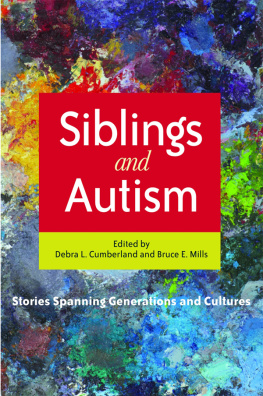


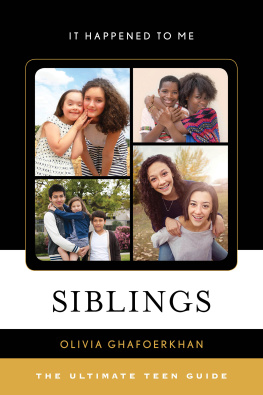
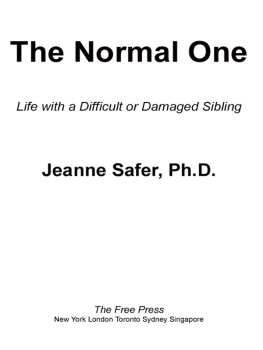
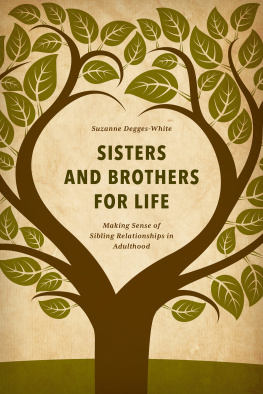

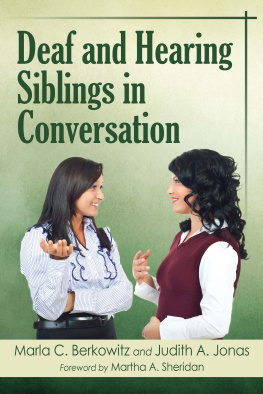
 COLUMBIA UNIVERSITY PRESS NEW YORK
COLUMBIA UNIVERSITY PRESS NEW YORK